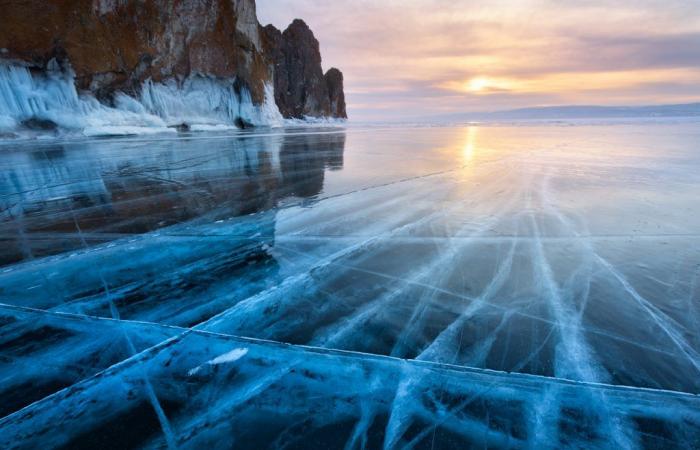During a fascinating exploration of the mysterious depths of Lake Baikal in Siberia, a robot deployed last summer revealed astonishing discoveries: images of cracks and deformations caused by previously unknown mud volcanoes. This discovery offers an intriguing insight into underground geological activity and its potential implications for the region.
A lake still full of mysteries
Formed approximately 25 million yearsLake Baikal, located in eastern Siberia, is the oldest freshwater lake in the world. It extends over an impressive area of more than 31,000 square kilometers and reaches maximum depths of almost 1,642 meters, making it also the lake the deepest on the planet. This remarkable body of water is surrounded by wild and unspoiled nature that is home to unique biodiversity with many endemic species of plants and animals, including the Baikal seal, the only freshwater seal in the world. The crystal clear waters of Lake Baikal are also renowned for their exceptional purity.
Despite its long history and continued exploration, Lake Baikal still retains many mysteries and secrets. Observations carried out using robots and other cutting-edge technologies regularly reveal surprising new discoveries, revealing the extent of the richness and diversity of this unique ecosystem. Researchers are particularly interested in the depths of the lake where extreme environments and unique conditions can harbor unknown life forms and fascinating geological phenomena.
Mud eruptions near a fault
Recently, observations made with an underwater robot revealed scars marked by mud eruptions at depths of 100 to 165 meters in two places along the northwest shore of Lake Baikal: Malaya Kosa Bay and Goryachinskaya Bay.
Mud volcanoes are surface manifestations of deeper geological processes that form when mud and gases escape from deep within the earth. The resulting images show deep craters overflowing with mud, evidence of recent eruptions, as well as layers of rock torn and displaced by these underground forces. Additionally, hundreds of small cone-shaped craters were spotted at greater depths, suggesting widespread volcanic activity in the region.
Although scientists have previously documented mud volcanoes in Lake Baikal, this latest discovery is of particular concern due to its proximity to a fault zone known as Severobaikalsk which straddles the shore of the lake.
Researchers speculate that these recent mud eruptions could be early indicators of a imminent seismic activity. This fault has indeed been the site of strong earthquakes in the past, raising concerns about the possibility of future earthquakes in the region. However, the researchers note that these eruptions of dissolved mud and gas are not expected to deeply disrupt Lake Baikal’s ecosystem. On the contrary, these phenomena could be an integral part of the natural balance of the lake, providing unique opportunities to study underwater geological and ecological processes.
Recent discoveries in the depths of Lake Baikal shed light on the complex geological activity that lies beneath its tranquil waters. The identification of mud volcanoes and signs of recent eruptions, linked to active tectonic faults, highlight the importance of monitoring this sensitive region. While raising questions about the future evolution of the area, these phenomena offer researchers a rare chance to deepen our understanding of the underground dynamics and the unique ecosystem of the lake. Baikal continues to fascinate and reveal its secrets, reminding us that it remains an inexhaustible source of knowledge for science.






